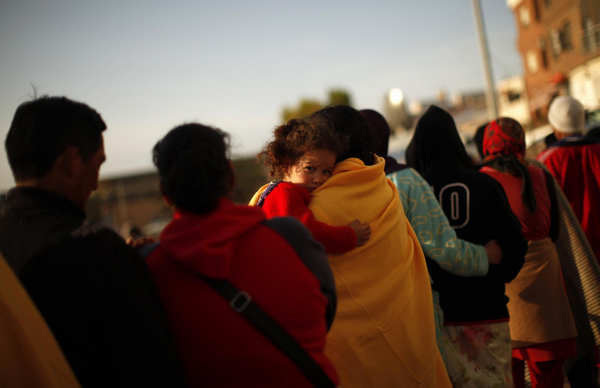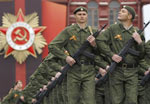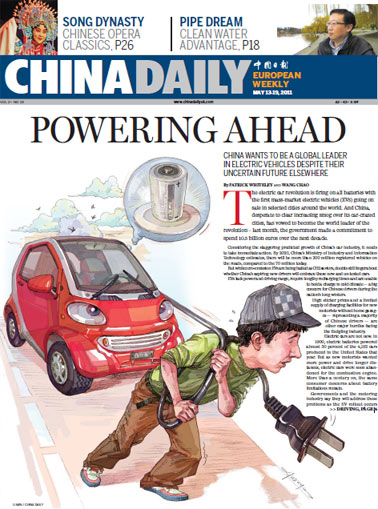Photos
Hundreds queue for food after Spanish earthquake
Updated: 2011-05-12 20:03
(Agencies)
|
 Residents line up during food distribution after spending the night in the open following a rare earthquake that rocked the town of Lorca in southeastern Spain May 12, 2011. Hundreds of people queued for food on Thursday from emergency workers in the Spanish town of Lorca, prevented from returning to their homes damaged by an unusually strong earthquake that killed eight people.[Photo/Agencies] |
LORCA, Spain -- Hundreds of people queued for food aid in the Spanish town of Lorca and wandered the streets wrapped in blankets on Thursday after an earthquake killed eight people and injured more than 120.
Thousands of residents of the town slept on the street overnight, unable to return home after the 5.1 magnitude quake on Wednesday evening destroyed masonry and building facades, crushed cars and littered streets with bricks.
Many of Lorca's 90,000 residents were waiting for housing inspectors to give them the green light to enter buildings.
Prime Minister Jose Luis Rodriguez Zapatero said 800 military and civil guard personnel were in Lorca, 370 army tents had been sent, and a camp hospital had been set up.
"We've activated all aid measures with maximum speed," he said live on television, pledging to rebuild damaged water mains and roads quickly and to visit the town on Friday.
The number of fatalities was revised down to eight, including one teenage girl, from an earlier report of 10. More than 120 people were injured, three critically, officials said.
|
||||
"We spent the night outside here in the square. The emergency workers are giving us food and blankets. We're not allowed to go into our apartment until an engineer comes and looks at our building," said Edgar Rosales, 38, an Ecuadorian immigrant.
Rosales said the earthquake jolted groceries off the shelves of his Latin American food store and rained produce down on to his daughters.
"The important thing is that we're all okay. We're all here together now," Rosales said.
Earthquakes causing extensive damage and fatalities are rare in Spain although the south of the country has extensive faultlines. The U.S. Geological Survey registered one dead in a 1997 earthquake.
In 1969 a 7.8 magnitude earthquake killed 19 people in the southern town of Huelva, according to Spain's National Geographic Institute.
Wednesday's earthquake was revised down by the USGS from an initial estimate of magnitude 5.3, but was relatively close to the surface at a depth of just one kilometre.
Zapatero's Socialist party and the centre-right opposition Popular Party suspended campaign rallies throughout Spain for the May 22 regional and local elections for a day on Thursday out of respect for the victims of the earthquake.
Opposition leader Mariano Rajoy visited Lorca on Thursday, as did Deputy Prime Minister Alfredo Perez Rubalcaba and Defence Minister Carme Chacon.
Part of the front of a badly damaged church collapsed hours after the quake and other buildings in the town were considered unstable. (Writing by Fiona Ortiz; editing by Philippa Fletcher)
E-paper

War of the roses
European Chinese rose growers are beating their Chinese rivals at their own game
Preview of the coming issue
High-tech park gets big boost
At the source
Specials

New wave
Coastal city banks on marine sector to ride next stage of economic development

Drunk driving
Drunk drivers face a detention for one to six months and a revokation of their drivers' license.

V-Day parade
A military parade marking the 66th anniversary of the Soviet victory over Nazi.

